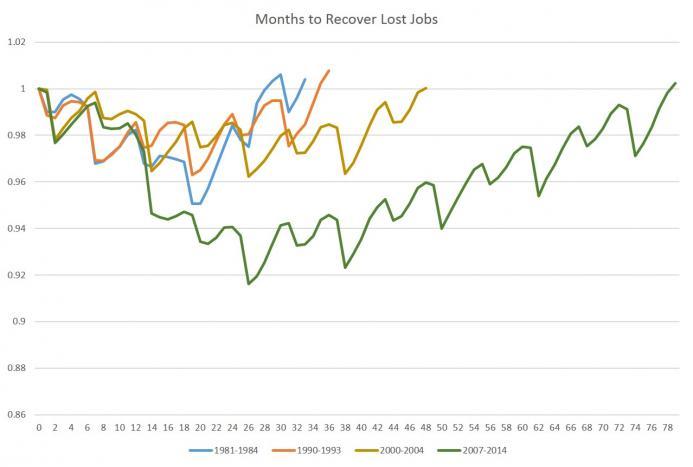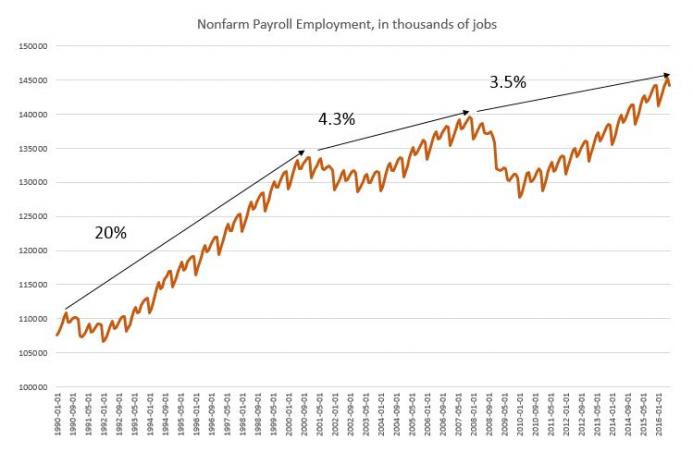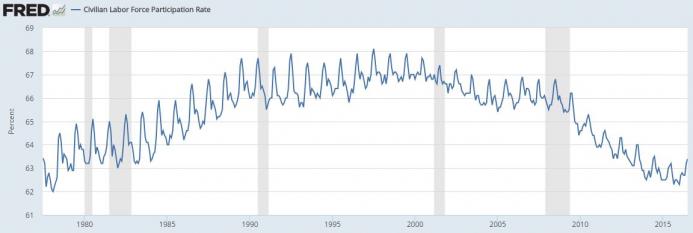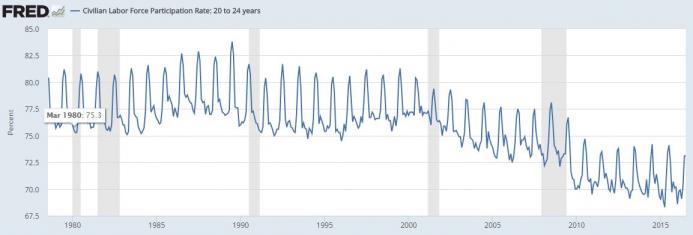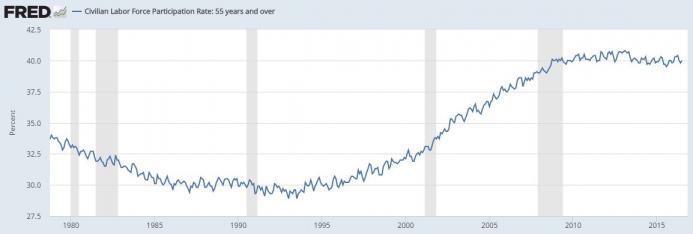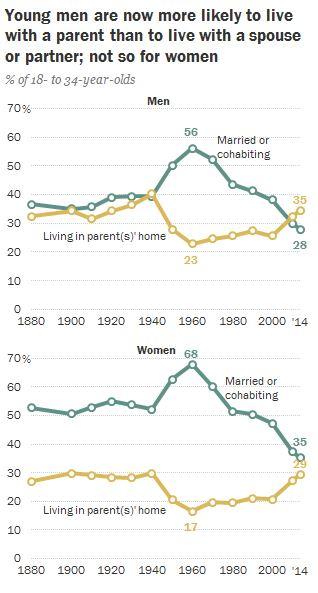 Jeffrey A. Tucker
Jeffrey A. Tucker
******************************
I was at a restaurant for lunch and had time to visit with the waitress, who turns out to be a college graduate from a good institution. She has a degree in European languages. Here she is waiting tables with nondegreed people, some five years her junior, some 10 years her elder.
She is making good money, but so are her co-workers. You have to wonder: given her position, what was the professional advantage to her of those four hard years in school and the $100K spent on them? What were the opportunity costs?
This is not another article to disparage the value of a college degree. I would like to raise a more fundamental question. It concerns the strange way in which our education system has overly segmented our lives into a series of episodic upheavals, each of which has little to do with the other, the value of one accomplishment being oddly disconnected from the next stage, and none of them directly connecting to our professional goals except in the unusual case.
From the earliest age until adulthood, we’ve been hurled from institution to institution in a way that eventually sets young people back from developing continuity of plans and a social support system to realize their goals. At the end of it all, people find themselves back where they started: figuring out their market worth and trying to find a buyer for their services.
Instead of drawing down on accumulated capital, they end up starting fresh at age 22. Even after years of building social capital, they are drawing down on a nearly empty account.
There is something seriously wrong with this system. Shouldn’t our investments in our friendship networks extend across and beyond the stages of our development to make more of a difference in our lives?
The post-graduation diaspora
In a couple of months, for example, many millions of high school students will graduate. Celebration! Sort of. It’s great to finish school. But what’s next?
Many students find themselves devastated to lose the only social group and friendship network they’ve ever known. They worked for years to cultivate it, and in an instant, it is blown apart. They are left with a piece of paper, a yearbook of memories, a transcript, and, perhaps a few recommendation letters from teachers — recommendations that do them little good in the marketplace.
“Don’t ever change,” they write in each other’s yearbooks. The sentiment expresses a normal longing to hold on to the investment the students make in each other’s lives, even as everything about the system tries to take that investment from them.
Is this the way it should be?
Then, the same group, or at least many among them, look forward to college, where they are mostly, again, starting from scratch in a social sense. It can be very scary. College students begin their new experience isolated. They work for another four years to develop a network — a robust social group — to find their footing and to establish both a reputation and sense of self. This is the only world they’ve known for years, and they have invested their hearts and souls into the experience.
The social fabric ends up rich and wonderful, with intense friendships based on shared lives.
Finally, after four years, the graduation march plays, the tassel is moved from one side of the cap to the other, and the whole social apparatus goes up in smoke — again. Then, another diaspora.
Once again, students find themselves nearly alone, with few hooks into the world of commerce and employment. They have a degree but few opportunities to monetize it. Their social network is of limited use to them. All they have, yet again, is a piece of paper. Plus they have recommendation letters from professors that still do them little good in the marketplace.
This not always the case. There are workarounds, and digital networking is helping. People join fraternities and social clubs, and those can be useful going forward. But it might take years for these connections to yield results. The more immediate question is this: What do I do now? Lacking a broad sense of the way the world works, and missing any influential hooks into prevailing networks, a college grad can often find herself feeling isolated once again, starting over for the third time.
The failure of the central plan
This is the system that the civic culture has created for us. For the years from the ages of 14 through 22, students’ primary focus of personal investment and social capital building is centered on their peers. But their peers are just the same as they are: hoping for a good future but having few means to get from here to there.
Why does this keep happening? Looking at the big picture, you can start to see a serious problem with the educational system politicians have built for us. It is keeping people “on track” — but is it a track that prepares people for the future?
A core principle of the education system, as owned and controlled by government, is Stay in school and stay with your class. This is the emphasis from the earliest grades all the way through the end of college. The accidents of birth determine your peer group, your primary social influences, and the gang you rely on for social support.
To be “held back” is considered disgraceful, and to be pushed forward a grade is considered dangerous for personal development. Your class rank is your world, the definition of who you are — and it stays with you for decades. Everyone is on a track as defined by a ruling class: here is what you should and must know when. All your peers are with you.
Many factors entrench this reality. The public school system is organized on the assumption of homogeneity, a central plan imposed from the top down. It didn’t happen all at once. It came about slowly over the course of 100-plus years, from the universalization of compulsory schooling, to the prohibition of youth work, to the gradual nationalization of curricula.
In the end, we find the lives of young people strictly segmented by stages that are strangely discontinuous. Where are the professional contacts that result? Where are the friends who can smooth your way into the world of professional work? They aren’t among your former classmates. Your peers are all in the same position you are in.
Laws that lock people out
The workplace might help to mitigate this problem, but it’s incredibly difficult for young people to get a regular job thanks to “child labor” laws that exclude teens from the workforce. For this reason, only one in four high school kids has any real experience outside their peer group. They miss all the opportunities to learn and grow that come from the workplace — learning from examples of personal initiative, responsibility, independence, and accountability.
There are extremely narrow conditions under which a 14-year-old can find legal employment, but few businesses want to bother with the necessary documentation and restrictions. A 16-year-old has a few more opportunities, but, even here, these young people can’t work in kitchens or serve alcohol. The full freedom to engage a larger community outside the segmented class structure doesn’t come until after you graduate high school.
By the time the opportunity comes around to do authentic remunerative work, a student’s life is filled with other interests, mostly social, but also extracurricular. Instead of working a job, people are doing a thousand other things, and there seems to be no time left. It’s not uncommon for people to graduate with no professional experiences whatsoever to draw on. Their peers are their only asset, their only really valuable relationships, but these relationships have little commercial value.
How natural is any of this?
If you look at the social structure of homeschooling co-ops, for example, younger kids and older kids mix it up in integrated social environments, and they learn from each other. Parents of all ages are well integrated too, and it creates a complex social environment. The parents know all the kids and, together, they form a diverse microsociety of mutual interests. This is one reason that homeschooled kids can seem remarkably precocious and poised around people of all ages. They are not being artificially pegged into slots and held there against their will.
A better way
When you read about the experiences of successful people in the late 19th century, they talk of their exciting and broad experiences in life, working in odd jobs, meeting strange people of all ages and classes, performing tasks outside their comfort zone, encountering adult situations in business that taught them important lessons. They didn’t learn these things from sitting in a desk, listening to a teacher, repeating facts on tests, and staying with their class. They discovered the world through mixing it up, having fabulous and sometimes weird experiences, being with people who are not in their age cohort. They drew on these experiences for years following.
The system to which we have become accustomed is not of our choosing, and it certainly isn’t organic to the social order. It has been inflicted on us, one piece of legislation at a time. It is the result of an imposed, rather than evolved, order. Why wait until age 22 to get serious about your life? Why stick with only one career choice in the course of your appointed 40 years in professional life? Why retire at the young age of 65, just because the federal government wants you to do so?
Think about this the next time you attend a graduation. Are the students shedding only tears of joy? Or, in the sudden mixture of emotions, is there also the dawning realization that they are witnessing the destruction of a social order they worked so hard to cultivate? Are they also overwhelmed with the knowledge that, in short order, they will have to recreate something entirely new again? Where is the continuity? Where is the evidence of an evolved and developing order of improved opportunities?
The most important question is this: What are the alternatives?
Bring back apprenticeships. Bring back remunerative work for the young. Look beyond the central plan, and don’t get trapped. Rethink the claim that staying in school is an unmitigated good. Find other ways to prevent your heavy investments in others from dissipating; ensure instead that they will pay more immediate returns. Our friends should remain in our lives — and yield a lifetime of returns.

This article was originally published on FEE.org. Read the original article.



